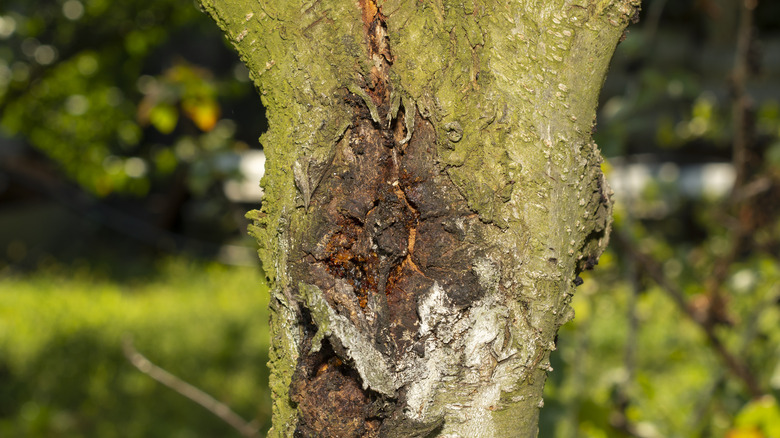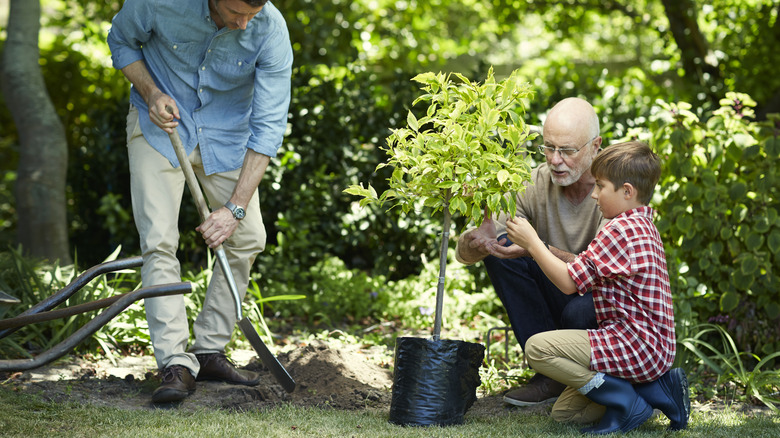If your tree isn’t looking as robust and vibrant as it once did, it’s a cause for concern. Trees are vital to our environment and personal spaces, offering beauty, shade, and a haven for wildlife. However, like any living organism, they’re susceptible to various diseases. These can range from minor issues, affecting only the tree’s appearance, to serious conditions that could hinder its growth or even be fatal. Let’s start with dead branches. If you see branches devoid of leaves or that have bark that’s peeling away, your tree might be suffering from a condition like canker disease or root rot. Canker disease causes sunken patches on the bark and leads to dead branches. To manage this, you need to prune the affected branches carefully, making sure to cut well below the diseased parts. Root rot, on the other hand, affects the tree’s roots, impeding its ability to absorb nutrients and water. This results in dead branches. The best approach here is to improve soil drainage and avoid overwatering, which can sometimes be enough to help the tree recover.
Moving on to discolored or wilting leaves, this symptom could be a sign of a disease like chlorosis, which is often due to a lack of nutrients, particularly iron. You’ll see leaves turning yellow while their veins remain green. To tackle chlorosis, you might need to adjust the soil pH to make iron more available to the tree and consider applying iron supplements.
Fungal growth and leaf spots are some other key signs

Fungal growths, such as mushrooms or conks on or around your tree, usually point to internal decay, often a sign of heart rot. This condition weakens the tree’s structure from the inside, posing a risk of falling branches. It’s a tricky situation because, by the time these growths are visible, the disease is often quite advanced. There’s no cure for heart rot at this stage, but you can prevent it by ensuring your tree’s wounds heal properly and minimizing damage to the bark.
Powdery mildew is another one to look out for. It appears as a white, powdery coating on leaves and is a common fungal disease. To manage powdery mildew, apply fungicides and ensure good air circulation around the tree. Another common fungal disease is anthracnose, which causes dark, sunken lesions on leaves and twigs. The best way to handle anthracnose is by pruning affected areas to improve air circulation and applying appropriate fungicides. Lastly, spotted leaves on your tree can be a sign of leaf spot diseases. Although these typically don’t affect a large portion of the tree, continuous and severe leaf shedding over the years necessitates action. The University of Minnesota Extension advises against planting trees too closely together. Additionally, it’s best to refrain from fertilizing trees showing signs of leaf spot diseases, as this might worsen their condition.
A comprehensive approach to managing tree diseases

When it comes to safeguarding the health of your trees, selecting the right species is a significant first step. The University of Florida says that there are over 11,000 tree species in North America. So, opt for those with natural disease resistance. For example, certain varieties of dogwood trees, like Kousa dogwood (Cornus kousa) are known for their resilience against common fungal infections like powdery mildew. These hardier species may thrive better in areas known for specific tree diseases. This can greatly enhance your tree’s chances of survival.
Beyond the initial selection, the ongoing care of your trees plays a vital role in disease management. Ensure that your trees receive the right amount of water and nutrients and are planted in suitable soil. Remember, a healthy tree is more capable of resisting diseases and recovering from them if they do occur. Pruning also matters — it is key to enhancing light access and airflow around your trees. When pruning a tree, remove diseased or dead branches to stop the spread of infections within the tree and to its neighbors. All in all, the regular monitoring of your trees is essential. Keep an eye out for any early signs of distress or disease so that you can act quickly. Remember, your attention and care can make all the difference.



